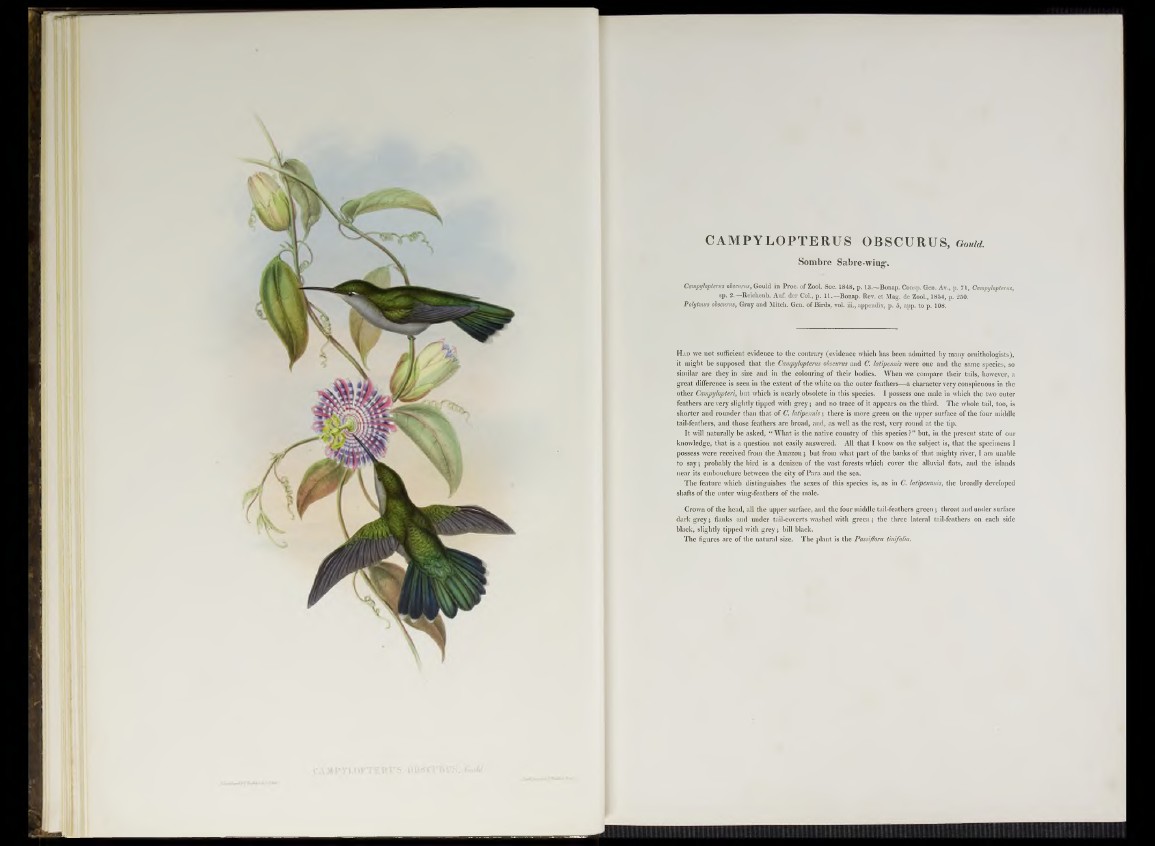
CAMPYLOPTERUS OBSCURUS, Gouid.
Sombre Sabre-wing’.
Campylopterus obscurus, Gould in Proc. o f Zool. Soc. 1848, p. 13.—Bonap. Consp. Gen. Av., p. 71, Campylopterus,
sp. 2 .—Reichenb. Auf. d e r Col., p . 11.—Bonap. Rev. e t Mag. de Zool., 1854, p. 250.
Polytmus obscurus, Gray an d Mitch. Gen. o f B irds, vol. iii., appendix, p . 5, app. to p . 108.
H ad we not sufficiënt evidence to the contrary (evidence which lias been admitted by many ornithologists),
it might be supposed that the Campylopterus obscurus and C. latipennis were one and the same species, so
similar are they in size and in the colouring of their bodies. When we compare tbeir tails, however, a
great difference is seen in the extent of the white on the outer feathers—a character very conspicuous in the
other Campylopteri, but which is nearly obsolete in this species. I possess one male in which the two outer
feathers are very slightly tipped with grey; and no tracé of it appears on the third. The whole tail, too, is
shorter and rounder than that of C. latipennis; there is more green on the upper surface of the four middle
tail-feathers, and those feathers are broad, and, as well as the rest, very round at the tip.
It will naturally be asked, “ What is the native country of this species?” but, in the present state of our
knowledge, that is a question not easily answered. All that I know on the subject is, that the specimens I
possess were received from the Amazon; but from what part of the banks of that mighty river, I am unable
to say; probably the bird is a denizen of the vast forests which cover the alluvial flats, and the islands
near its embouchure between the city of Para and the sea.
The feature which distinguishes the sexes of this species is, as in C. latipennnis, the broadly developed
shafts of the outer wing-feathers of the male.
Crown of the head, all the upper surface, and the four middle tail-feathers green; throat and under surface
dark grey; flanks and under tail-coverts washed with green; the three lateral tail-feathers on each side
black, slightly tipped with grey; bill black.
The figures are of the natural size. The plant is the Passiflora tinifolia.